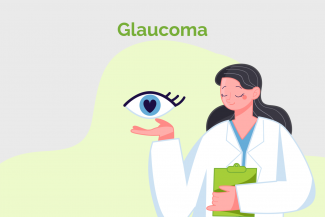
What are signs and symptoms of glaucoma?
Unfortunately there are usually no signs that you're developing glaucoma until vision loss occurs. It is often referred to as a “silent killer” as it does not manifest any symptoms until extensive peripheral visual loss becomes apparent in the final stages of the disease. Regular eye examination is essential to detect glaucoma. Your eye doctor can detect and treat high Intra Ocular Pressure(IOP) before it progresses to optic nerve damage and vision loss.
Closed angle glaucoma can present acutely with severe eye pain, blurring of vision, colored halos around lights, nausea and vomiting
Check Glaucoma prevention to determine when you should start regular eye examinations and Glaucoma Causes section to find out if you are at higher risk.










